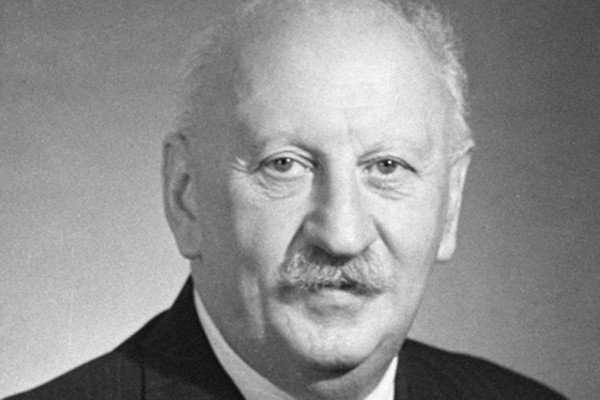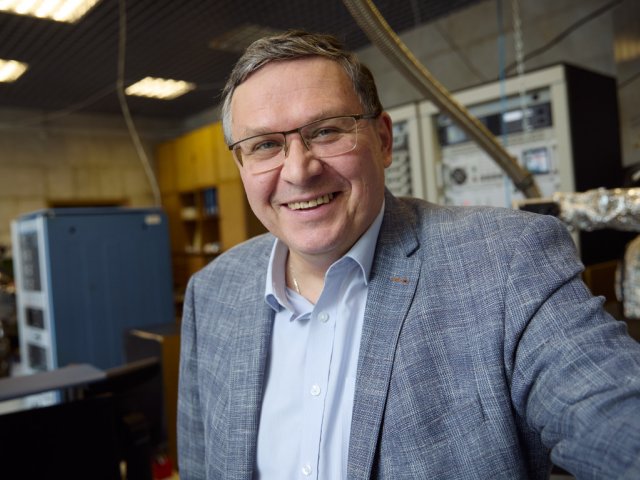Official:
Abram Fedorovich Ioffe. October 17 (29), 1880 – October 14, 1960. A Russian and Soviet physicist, science organizer, academician and vice president of the USSR Academy of Sciences, founder of a scientific school. Hero of Socialist Labor.
Life and Work:
1. Everyone who is familiar with the works of Vladimir Vysotsky, that is, the whole country, has heard about “the chief academician Ioffe.” And no one doubts that Vysotsky was right: Ioffe was the main academician, although formally Abram Ioffe was only the vice president of the Academy. This outstanding scientist and science organizer, teacher of Aleksandrov, Kapitsa, Kurchatov, and Semenov is now commonly called the “father of Soviet physics” and “Dad Ioffe.”
2. Before becoming the “Dad of Soviet physics,” the son of a second guild merchant from the town of Romny near Poltava graduated from St. Petersburg State Institute of Technology.
3. As a student, the future academician Ioffe participated in the assembly of a bridge near Kharkov. He found that the bridge project was miscalculated and the structure might collapse. Or it would require never-ending repair. He came up with a way to fix the problem easily and at no extra costs simply by placing a cast iron ingot at the junction of the bridge spans. But the road head forbade doing this, because all the possibilities for repairs would be exhausted and the repair team would have to live on their regular salary only.
4. After graduating from St. Petersburg State Institute of Technology, Ioffe also graduated from the University of Munich. It was there that he learned from the famous Roentgen. He received his Ph.D. and turned down a flattering offer to continue working with Roentgen.
5. When at the end of his life Wilhelm Konrad Roentgen fell seriously ill, his student Abram Ioffe gave him money... to make an X-ray.
6. In 1911, Abram Ioffe converted to Lutheranism; this was necessary for marriage.
7. In 1911, Ioffe determined the charge of an electron. The paper was published only in 1913, a little later than Robert Millikan did, so it was Millikan who is considered the first person to measure the charge of an electron.
8. In 1916, Abram Ioffe organized his famous physics seminar; young scientists from the university and the Polytechnic Institute became its participants – those who, together with him, would later become the pride of Soviet physics.
9. In 1918, Ioffe organized the Physics and Mechanics Department at the Polytechnic Institute, where they began to train physicists and engineers.
10. In the same year, Ioffe created and headed the Physics and Technology Department at the State Institute of Roentgenology and Radiology. In 1921, the department grew into the Physico-Technical Institute of the Academy of Sciences and Abram Ioffe became its head. Today it is the Ioffe Institute.
11. A huge number of papers prepared at the Physico-Technical Institute were not signed by Ioffe, although his contribution to them is significant: Ioffe was distinguished by exceptional scientific generosity and unselfishly helped his students. Later on, his student and Nobel laureate Nikolai Semyonov formulated this principle as follows: “If you want a student to develop any new idea, do it imperceptibly, trying as much as possible to make students come to the idea as if independently, taking it as their own idea… Avoid over-management, give your students the opportunity to take the initiative and cope with challenges on their own.”
12. It was Academician Ioffe who asked Rutherford, who headed the Cavendish Laboratory in Cambridge, to accept Pyotr Kapitsa for an internship.
13. In addition to the Physico-Technical Institute, Ioffe also headed the Agrophysical Institute since 1932. Ioffe took an active part in establishing physical and technical institutes in Kharkov, Dnepropetrovsk, Sverdlovsk, and Tomsk.
14. He could have led the Soviet atomic project. But he dared to refuse in favor of his younger fellow Kurchatov. “Kurchatov? I don’t know such an academician,” Stalin said. However, Ioffe insisted, and Kurchatov was given the title of academician.
15. During the campaign “combating cosmopolitanism,” Ioffe was expelled from the institute he had created. But he did not give up: he organized a semiconductor laboratory and – after Stalin’s death – he became the head of the institute that arose on its basis. Ioffe was awarded the Lenin Prize posthumously in 1961.
16. A square in St. Petersburg and a street in Berlin are named after Abram Ioffe.






















